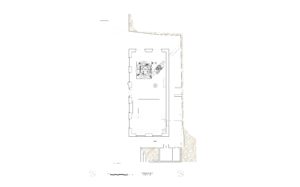Between the summer and autumn of 1912, the wool mill Lanificio Marzotto presented two projects to create a diversion of the waters coming from the left tributaries of the initial stretch of the Agno river. Signed by eng. E. Albarello, the projects envisaged the use of the waters of small streams (Lora, Rottolon, Peschele and Frizzi) in order to “generate driving force to be used in the two Marzotto plants”. It should be noted that at the time the waters of the Peschele valley already fed a small mill, owned by the Parlati family.
There were four outlets: on the Lora stream, on the drain channel of the aforementioned mill, on the Rotolon and on the Antesa and Val Fredda valleys. The long diverting channel (over 3 km) would collect the waters from all these valleys, often running in tunnels, as is the case under Monte Santa Giuliana (for about 400 meters). A forced conduit, 275 meters long, would start from the narrow and long loading tank, with a capacity of about 1000 m3, the water of which would feed two Pelton turbines located in an engine building in front of the Bruni power plant, on the other side of the Agno river.
Some variants were recorded in the following years: the water from the Agno di Creme stream was also diverted and a bridle-siphon was initially designed for the intake works on the Rotolon (“the most important work of the whole diversion project, both for its size and due to the importance of the waterway it crosses”) which was then limited to the construction of a concrete canal bridge and to the construction of a small dike made of stones and masonry.
The Frizzi plant, now owned by Eusebio Energia, is currently in operation















